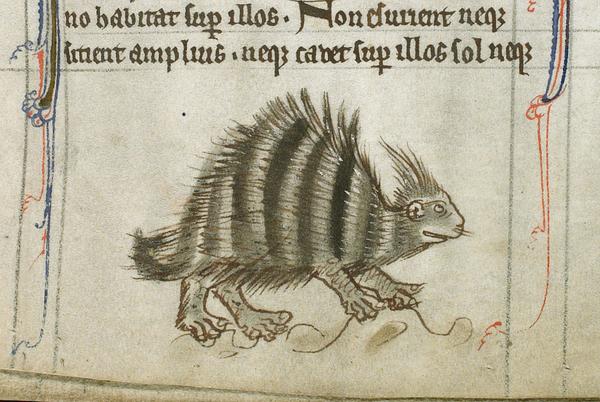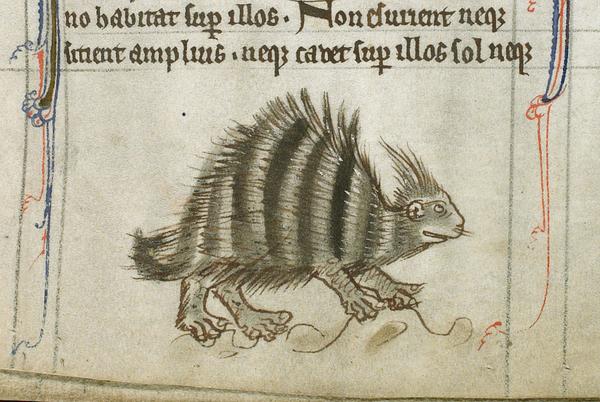This blog post is part of this year’s ‘Explore Your Archive Week’, which runs from 21st-29th November 2020. Today’s theme is science.
According to naturalists, Earth is home to an estimated 15 million species of flora and fauna. Of these only about 2 million have been officially identified by scientists. To put it another way, 86% of land-based species and 91% of underwater species have yet to be studied, despite 18,000 new species being discovered every year.
One such discovery is the Popa langur, a new species of monkey identified mere weeks ago in a remote region of Myanmar. Named after the extinct volcano where it was discovered, the Popa langur has already been given the unenviable status of being critically endangered. It is estimated that between 0.01 and 0.1% of all species become extinct each year, however, unlike the Cretaceous-Paleogene Extinction Event which saw the sudden mass extinction of 75% of all plant and animal species 66 million years ago, science points to humans as being almost entirely responsible for the current rates of species extinction.
On this dispiriting thought, we turn our attention to the topic of today’s post, early depictions of animals in Lambeth Palace Library’s collection. Early scientific illustrations remain a valuable resource to naturalists, particularly when the animal in question became extinct prior to the development of photography. We shall also look at illustrator’s early attempts to depict animals newly discovered by Europeans. Some of the results are so fantastical that we can be confident that the illustrators must have used secondary information to produce them. Either that, or they took egregious liberties with their artistic licence.
Our first animal, the dodo, is something of a poster child for extinct animals. The earliest recorded mention of the dodo was made by Dutch sailors in the late sixteenth century on the island of Mauritius. Due to a previous lack of natural predators, the dodo became easy prey for sailors and other invasive species, notably the ship’s rats. Interestingly, there is some debate in the contemporary sources as to the edibility of the dodo with one Dutch naval officer, Admiral Jacob Cornelis van Neck, describing it as “lothsome.”[1]The last accepted sighting of the dodo was in 1662, a mere 64 years after it had first been discovered. Cohabitation between humans and the dodo was brief and ultimately fatal for the flightless bird. As a result, there are few illustrations of the dodo which were drawn from live specimens.

Sir Thomas Herbert was one of the few who did make a visual record of the dodo during his travels to Mauritius in 1629. His encounter with the dodo, alongside a drawing, can be found in his book Some Years Travels into Divers Parts of Africa, and Asia the Great (LPL, B13.5/H41), first published in 1634. However, despite having seen live dodos in the wild, Herbert’s attempts to capture their likeness left a little to be desired. In his drawing, the beak is noticeably raptor like, starkly different from the long, hooked beak seen in skeletal remains.
We turn our attention now to The Voyage of Governor Phillip to Botany Bay (LPL, B18.1/P54). Published in 1789, The Voyage… is an account of the ‘First Fleet’, a fleet of 11 ships sent to Australia in 1787 to establish a British penal colony. Published as the official account, The Voyage… details the first years of Britain’s colonial activities in Australia, including their interactions with Aboriginal Australians. The book includes maps, charts and, importantly for our purposes, illustrations of species newly discovered by the colonists.
Australia’s geological isolation and climatic events has resulted in a unique ecosystem. The overwhelming majority of fauna found in Australia is endemic to the country. We can only begin to imagine what the early colonists made of these weird and wonderful creatures. However, much like Herbert’s dodo and it’s falconesque beak, the artist has used the features of more familiar animals as reference points. As a result, the kangaroo has a distinctly shrew-like snout. It also sits flat on the ground, whereas real life kangaroos use their tails for balance. The drawing of the Wulpine Opossum, or as it is known today, the Common Brushtail Possum, is also far more reminiscent of the European pine marten than it is of a possum. However, compared with the following illustrations, it is at least possible to identify these animals as being a kangaroo and a possum.


The following woodcuts are taken from Bernhard von Breidenbach’s Peregrinatio in terram sanctam (LPL, [ZZ]1486.6). Published in 1486, the Peregrinatio… is a remarkable record of Breidenbach’s pilgrimage from Oppenheim near Mainz to the Holy Land. With the assistance of the book’s illustrator, Erhard Reuwich of Utrecht, Breidenbach describes their journey in incredible detail, producing the first ever printed illustrated travel guide. The book contains several woodcuts of intricate panoramic cityscapes, including one of Venice which measures five-feet-long.
The book also includes several animals that were purportedly encountered during the journey. These included camels, giraffes, and a breed of long eared goat. These all seem fairly reasonable; however, it appears that Reuwich couldn’t help but embellish the truth slightly. For example, while it is very likely that the pilgrims encountered crocodiles during their travels down the Nile, Reuwich’s long-necked attempt looks far more dragon like. Similar treatment has been given to the salamander, which looks like the stylised version often seen in heraldry. Naturally, a unicorn has been included for good measure. The final animal, an ape, can be seen holding a walking-stick and leading the camel. Despite its fantasy safari, the Peregrinatio… proved to be a best seller and was reprinted thirteen times over the next 30 years.

Reuwich wasn’t alone in trying to make his illustrations appear more exotic. Olaus Magnus, the exiled Archbishop of Uppsala, Sweden, had an apparent fascination with walruses and included several of them in his work. However, we would be forgiven for thinking that these walruses were in fact some mythical sea monster of Magnus’ own creation. In his Historia de Gentibus Septentrionalibus (LPL, B64.1/M27), first published in 1555, a boar headed monster with four pronounced legs can be seen scaling the cliffs as it is hunted by some sailors. To say that it bears little resemblance to an actual walrus would be an understatement.
A possible reason behind Magnus’ embellishments is that he wanted to present the North as being a mysterious land full of strange and wondrous things, no doubt to impress the people he was exiled with. The fact that he had never actually seen a walrus should also be considered.

Our look into the fantastic beasts of Lambeth Palace Library has taken us across the globe, from Australia’s arid outback to the polar seas. While it may be suggested, and with good reason, that some of the animals shown above were victims of an artist’s overactive imagination, they are a fascinating insight into the known world at various points in history. We’ll conclude this blog post with a look at the Lambeth Apocalypse (LPL, MS 209), written in the late thirteenth century. Nestled in one of the margins we find a little porcupine. There isn’t much more to say about him, except, just look at those toes!

[1] J.P. Hume, “The history of the Dodo Raphus cucullatus and the penguin of Mauritius”, Historical Biology, vol. 18(2), (Abingdon, Oxfordshire: Taylor & Francis, 2006), p. 80.

